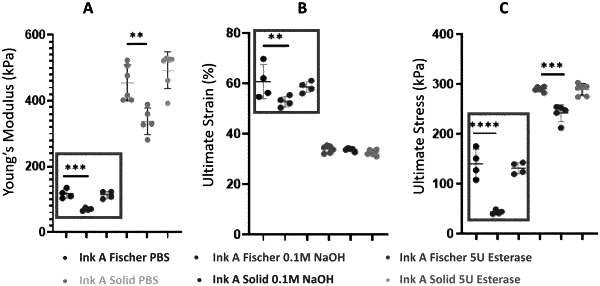| CPC B29C 64/188 (2017.08) [B29L 2031/753 (2013.01); B33Y 10/00 (2014.12); B33Y 40/20 (2020.01); B33Y 70/00 (2014.12); B33Y 80/00 (2014.12)] | 16 Claims |

|
1. A method of modifying a polymeric scaffold comprising polymerized poly(ethyelene glycol) di(meth)acrylate moieties, polymerized poly(ethyelene glycol) di(meth)acrylamide moieties, polymerized poly(ethyelene glycol) (meth)acrylate/(methacrylamide) moieties, or mixtures thereof, the method comprising:
providing the polymeric scaffold;
contacting the polymeric scaffold with a hydrolysis agent comprising NaOH and a proteolysis agent comprising cholesterol esterase; and
after contacting the polymeric scaffold with the hydrolysis agent and the proteolysis agent, contacting the polymeric scaffold with lung cells,
wherein contacting the polymeric scaffold with the hydrolysis agent and the proteolysis agent increases lung cell attachment to the polymeric scaffold and reduces a Young's modulus of the polymeric scaffold.
|